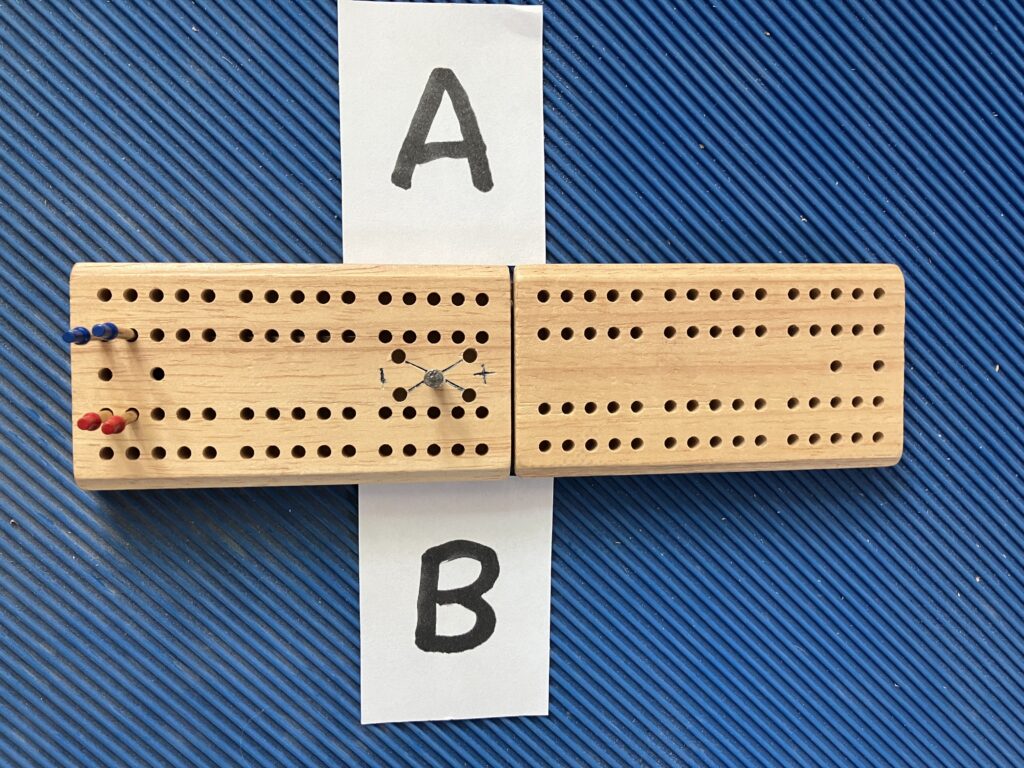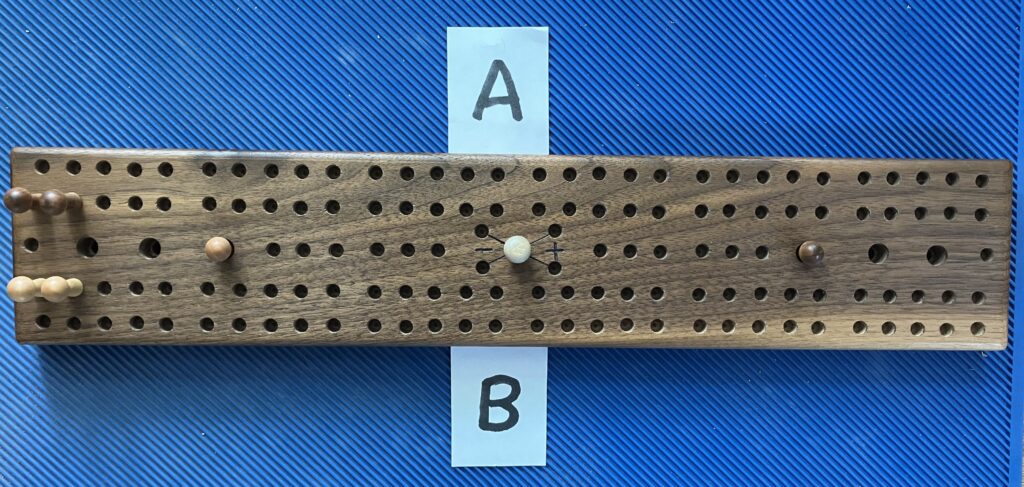The Quantum Peg:
A Useful Tool for Quantum Cribbage
by Dr. James N. Pierce
(Emeritus Professor of Astronomy
Minnesota State University, Mankato)
One of the biggest problems in playing Quantum Cribbage is trying to remember which rules are in force during any particular hand: Regular Cribbage or Anti-cribbage? The Quantum Peg offers a reasonable solution.
The Quantum Peg lives among a pattern of five holes in the shape of an X. These five holes can be drilled into a cribbage board or a small scrap of wood, or they could be drawn on a piece of paper. One end of the X is marked with a plus (+) and the other end is marked with a minus (–).
The X is oriented such that the + signifies the direction of increased score during the game. The players (A and B) then sit on the unmarked sides of the X. The Quantum Peg is placed in the center of the X at the start of the game.


When the initial cut for deal is made and the rules for the first hand are determined, the Quantum Peg should be moved to indicate which of the four combinations will begin the game: A deals Regular (A+), A deals Anti (A–), B deals Regular (B+), or B deals Anti (B–). The Quantum Peg will remain in its position on one arm of the X throughout the first hand.
When the hand is over, the deal switches to the other player, the rules for the hand switch, and the Quantum Peg is simply moved to the other end of the X diagonal it is on: from A+ to B–, from A– to B+, from B+ to A–, or from B– to A+. This movement of the Quantum Peg is done for each change of the deal, and the players can tell at a glance what the game rules are at any moment. They both need to insure that the Quantum Peg has always been shifted along the diagonal to the dealer’s side of the X.
